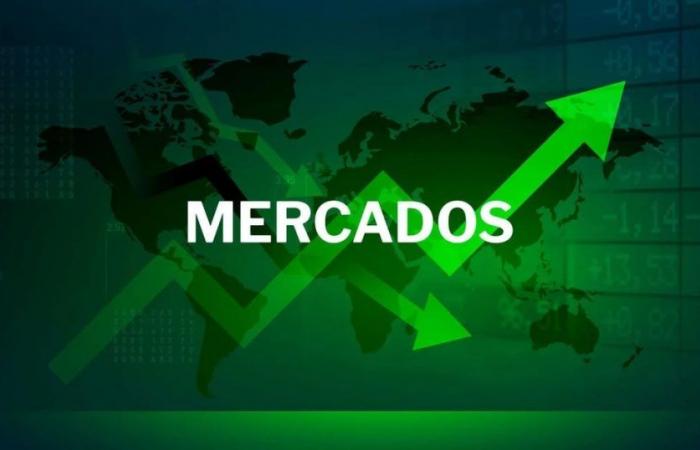Bad day for the Mexican S&P/BMV IPC index, which ended Friday, June 21, with notable drops in the 1.06%until the 52,788.50 points. The Mexican S&P/BMV IPC index reached a maximum volume of 53,405.11 points and the minimum number of 52,698.68 points. The trading range for the Mexican S&P/BMV IPC index between its highest and lowest point (maximum-minimum) during this day was located in the 1.32%.
In reference to the profitability of the last seven days, the Mexican S&P/BMV IPC index registers an increase of 0.75%% although, on the contrary, in year-on-year terms it still accumulates a decrease in 0.61%. The Mexican S&P/BMV IPC index is one 10.09% below its maximum so far this year (58,711.87 points) and a 1.89% above its minimum price of the current year (51,807.55 points).
A stock index is an indicator that shows how the value of a set of assets changesso it collects data from several companies or sectors of a part of the market.
These indicators are mainly used by the stock exchanges of different countries around the world and each of them can be integrated by companies with different specificities such as having a similar market capitalization or belonging to the same type of business. In addition, there are some indices that only take into account a handful of shares to determine their value or others that consider hundreds of shares.
Stock market indices serve as indicator of stock market confidence, business confidence, health of the national and global economy, and stock investment performance and shares of a company. If investors lack confidence, stock prices tend to fall.
Likewise, they function to measure the performance of an asset manager and allow investors to make a comparison between profitability and risk; measure the opportunities of a financial asset or create portfolios.
This type of indicators began to be used at the end of the 19th century after the journalist Charles H. Dow. carefully analyzed how company shares tended to rise or fall in price together, so he created two indices: one that contained the 20 most important railway companies (as it was the most important industry at the time), as well as 12 shares of other types of businesses
Nowadays there are various indices and They can be associated based on their location, sectors, company size or even the type of assetFor example, the US Nasdaq index is made up of the 100 largest companies largely related to technology such as Apple (AAPL), Microsoft (MSFT), Amazon (AMZN), Facebook (FB), Alphabet (GOOG), Tesla (TSLA), Nvidia (NVDA), PayPal (PYPL), Comcast (CMCSA), Adobe (ADBE).
Each stock index has its own calculation method, but the main factor is the market capitalization of each company that comprises it. This is obtained by multiplying the daily value of the bond in the corresponding stock market by the total number of shares that are in the market.
Companies listed on the stock exchange are required to present a balance of its composition. This report must be submitted every three or six months, as the case may be.
Reading a stock index also implies taking into account its evolution over time. New indices always start with a fixed value based on security prices on your start date, but not everyone follows this method. Therefore, it can confuse.
If one index adds 500 points in a day, while another only adds 20, it might appear that the first one performed better. However, if the first started the day at 30,000 points and the other at 300, you can see that, in percentage terms, the gains for the second were larger.
Between the major US stock indices There is the Dow Jones Industrial Average, better known as Dow Jones, made up of 30 companies. Likewise, the S&P 500, which includes 500 of the largest companies on the New York Stock Exchange. Finally comes the Nasdaq 100which brings together 100 of the largest non-financial firms.
On the other hand, the most notable indices of Europe are the Eurostoxx 50, which covers the 50 most important companies in the eurozone. He too DAX 30, the main German index that contains the most prominent companies on the Frankfurt Stock Exchange; the FTSE 100 from the London Stock Exchange; he CAC 40 from the Paris Stock Exchange; and the IBEX 35from the Spanish stock market.
In Asiawe have the Nikkei 225, made up of the 225 largest companies on the Tokyo Stock Exchange. There is also the SSE Composite Index, which can be considered the most representative of China, made up of the most relevant companies on the Shanghai Stock Exchange. Likewise, it is worth mentioning the Hang Seung Index in Hong Kong and KOSPI in South Korea.
Talking about the latin american regionyou have the CPIwhich contains the 35 most consolidated firms on the Mexican Stock Exchange (BMV). At least a third of them are owned by tycoon Carlos Slim.
Another is the Bovespa, made up of the 50 most important companies on the Sao Paulo Stock Exchange; he Merval from Argentina; he IPSA From Chile; he MSCI COLCAP from Colombia; he IBC of Caracas, made up of 6 companies from Venezuela.
Likewise, there are other types of global stock indices such as the MSCI Latin Americawhich includes the 137 most important companies in Brazil, Chile, Colombia, Mexico and Peru.
Likewise, there is the MSCI World, which includes 1,600 companies from 23 developed countries; he MSCI Emerging Markets, made up of more than 800 companies from developing countries; and the S&P Global 100made up of the 100 most powerful multinational firms on the entire planet.


